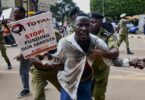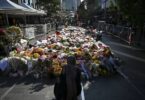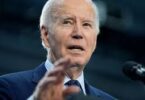Mitchell Feierstein
The Covid-19 market turmoil set off a chain of flashbacks in my mind, from crisis to crisis over the past 40 years. They all fit together in a picture of Wall Street fraud and criminal policies, with the virus as the last straw.
Last week, I spoke with a young stock trader currently working on Wall Street. I remember saying: “The last time I remember seeing volatility like this in markets, my 40-year Wall Street career flashed in front of my eyes. I was like a deer in the headlights.”
Thirty seconds of silence followed before I added: “Well, actually, the volatility we have seen since mid-February is unprecedented; in history, nothing like this has ever happened. It’s a case of 12 years of climbing up the staircase only to be pushed down the elevator shaft – with more downside ahead.”
Later that evening, thinking about my conversation, I recalled the highly-rated Wall Street crashes I saw during my career. In 1982, the fraud at Drysdale Government Securities INC. made one of our traders on the floor frantic. He was wildly flailing his arms, jumping up and down, and threw the handset of his phone to the floor, smashing it to pieces. All the while, he was shrieking: “F**king Drysdale has gone f**king bust. They will take down Chase Manhattan Bank with them, and the entire global f**king banking system. Repo is finished.”
Repo is an abbreviation for Repurchase Agreements. The Repo marketplace is like a securities dealers’ pawn shop for government bonds – bring us your securities and some other player will provide short-term loans.
Shortly after his tirade, the Telerate screens flashed “Drysdale misses interest rate payments.” Drysdale was crashing and Chase Manhattan Bank, Manufacturers Hanover Trust, and US Trust Co. were all on the hook.
But luckily for them, the Federal Reserve was there to bail them out. The Federal Reserve Bank is not part of the federal government and is not actually a bank. It’s owned by the big member banks and acts to protect banking interests – it seems they enable fraud and cover it up.
The Federal Reserve called in the 30 broker-dealers and an opaque bailout was arranged. Chase was on the hook for around $300 million, which was tax-deductible, because its client Drysdale was a total fraud. Two bankers were jailed and this killed Repo volumes for a few years.
A “broken Repo market” indicates something is very seriously wrong with financial markets, and a few short years later, we had another crisis. Who could forget living through October 19, 1987, Black Monday, when the stock market plummeted 508 points or 22.6 percent – the biggest one-day percentage decline in history? After markets closed, we all had drinks on the 107th floor of our building in One World Trade Center. It felt like a funeral. With my eight years of experience, I calmly said: “Don’t feel bad. It’s probably a buying opportunity.”
If looks could kill… I am just glad the windows in the Windows On The World’s bar did not open or they may have given me a push. I later found out that many of them had lost millions of dollars, of their own money, in a single day.
My memory then flashed to the Savings and Loan Crisis. I remember the Dow Jones new board headlines flashing across the trading floor: “Numerous bankers arrested for their part in the S&L crisis.” Many of these bankers were jailed for a series of frauds and other illegal activities that took place.
The S&L crisis saw 1,043 out of the 3,234 Savings and Loan associations in the United States from 1986 to 1995 go bust. Real crimes were committed, and bankers were jailed. The Resolution Trust Company was born to unwind the 1,034 S&Ls in an orderly manner. The S&L unwind has long been referred to as the most “catastrophic collapse of the banking system since the Great Depression.”
And then came the Global Financial Crisis of 2008 (GFC). I still recall seeing a video of ex-Federal Reserve chairman Alan Greenspan on stage with then-Fed Chairman Bernanke. Greenspan, commenting on the Lehman Brothers collapse, lamented that “if you have adequate capital, you do not have defaults of senior debt and you do not have contagion.”
Greenspan, aka “The Maestro,” continued as Bernanke twitched, looking increasingly uncomfortable: “I think there was rampant fraud in a lot of what was going on in these markets. We need to get far higher levels of enforcement of existing fraud statutes… things were being done that were certainly illegal and clearly criminal in certain cases, by which I mean fraud. Fraud is a fact. Fraud creates very considerable instability in competitive markets. If you cannot trust your counterparties, it won’t work, and indeed, we saw that it didn’t.” Bernanke seemed shocked at how easily Greenspan admitted Wall Street’s rampant fraud. Illegal and criminal activities played a major role in the GFC for which no bankers were jailed and no banks closed down. They paid tax-deductible fines that were insignificant relative to the gains made.
The same players who were bailed out then went back to what they do best. Too big to fail is now bigger, but with one crucial difference – the concentration of toxic risk remains in fewer hands and is enabled by Washington’s pay-to-play swamp. As corporate debt hits new all-time hig-hs, balance sheets remain riddled with accounting fraud and enforcement hits all-time lows; we will soon see who is naked and it won’t be pretty.
Last autumn, I warned investors that Germany’s economy was falling off a cliff and was either in a recession or would be very soon. I cautioned that Italy’s debt is a huge problem and other member states and the rest of the world are not far behind Germany. Now in March, you can expect and will need to prepare for a full-blown economic depression. Banks, politicians and governments will scapegoat Covid-19 to shift the blame for over 30 years of fiscal profligacy, loose monetary policies, fraud, and the lack of any proper regulatory enforcement away from themselves and onto anything or anyone else. Eventually, taxes will skyrocket to pay for these opaque bailouts, reckless spending policies, and record low interest rates during the past three decades.
Covid-19 presents an easy way to assign blame while forcing through “emergency legislation” allowing big government to implement 1984-style draconian social controls that will impinge and dismantle personal freedoms, liberties and democratic principles as they fleece taxpayers – again. If you think the 2008 recession and bailouts were bad, wait until you see how the greatest economic depr-ession in history plays out.
This bubble has only begun to pop, and there are many more shoes to drop from this centipede before prices hit bottom. The downside will be significantly worse than the upside. Until leverage, valuations and corporate debt return to reasonable levels, stay clear. When these events do happen, we will see once-in-a-lifetime opportunities to create wealth. The two most important lessons I learned from my 40 years in international financial markets, lessons that can also be applied to politics and to life in general, are to never make any decision based on emotion or ideology and to never, ever trust the news. Today’s media are exponentially worse than they were in the 1980s and 1990s. They no longer provide news. What they provide are stories that are around 80 percent ideology and opinion,10 percent lies and spin, and 10 percent fact.
You need to divorce yourself from emotion and ideology. You need to base decision-making on statistical probability utilizing raw economic data, rational reason, logic and facts. Fasten your seat belts tightly; severe turbulence is coming, and the ride will be bumpy.
A vision of post-pandemic New York
Tyler Cowen
At some point the risk from Covid-19 will recede but not disappear. What might America then be like? The largest cities in the country, and New York City in particular, will remain vital, but their futures will be clouded by serious health and economic issues.
Most of all, there will be an exodus of elderly residents. New York City will become even more the province of young people, assuming the role that Berlin has long played in Germany. That will be good for the city’s long-run vitality.
Rents and land prices are likely to fall. This is not necessarily because of a high number of deaths, a ghoulish and difficult detail to predict. Nonetheless many businesses will think twice about locating their headquarters in New York City, if only because senior managers tend to be relatively old. The net effect will be to make the city less attractive for businesses but more affordable for residents, most of all young people. It will be more like the New York of the 1970s and 1980s, with fear of infection replacing the fear of crime.
For sure, it will be a much poorer New York. This is bad on its own terms, of course, and worse when considering the lower tax revenue it will bring and the second-order effects on school quality and pension plans. Still, as recompense there will be more regional development in the rest of the US, as locales such as Memphis and Charlotte attract more business interest.
New York City is also likely to develop the strictest norms for mask-wearing, “test and trace,” and other measures to limit the spread of the virus. Combined with the benefits from social distancing, that will eventually make the city visitable once again. Still, subway ridership is likely to remain lower. Residents will look even more to their neighborhoods and neighborhood shops. The city may have less retail overall, but New York has made these adjustments in the past and can do so again. If you dislike the “chaining” of so much of Manhattan, you might even find some upside in this development.
The residual danger of some commutes is likely to attract even more young, low-wage immigrants into the city. Such immigrants are overrepresented in many of America’s most dangerous jobs, such as working on fishing boats. Risk-seeking migrants have long been common in New York, from the first decades of the 20th century to more recently, and they will become even more so. That demographic shift will have pluses and minuses. But it is an adjustment that New York will be able to make, and again it will mean a kind of return to the city’s historical roots.
If Covid-19 survivors have immunity, as is the case with many viruses, the city’s social life may become very segregated. Survivors will have time-stamped immunity certificates and lead relatively active social lives. Those who have not had the virus will be far more Puritan — spending more time online, refusing to shake hands, biking rather than taking the subway. Different bars and even different parts of town will have reputations as better for one group or the other.
This kind of segregation is not an especially appealing prospect. Yet New York City, with its incredible choice and diversity, will be better suited to deal with it than will rural or suburban America. Of course if you haven’t been infected yet, and cannot prove immunity and get into the safe clubs and bars, you will be all the more scared to visit the riskier outlets available to you.
In fact many people, especially the young, may actually expose themselves to the virus deliberately, to join what is ostensibly the more fun-seeking crowd. Maybe there will be bars and parties for people in the “actively infected” phase. I shudder to think about the casualties, but it will probably be a safer experience than it is at the moment. So far suburban America has had a clear advantage when dealing with Covid-19. But as the country recovers from the very worst, New York and other major cities will adjust and recover some of their natural advantages.






